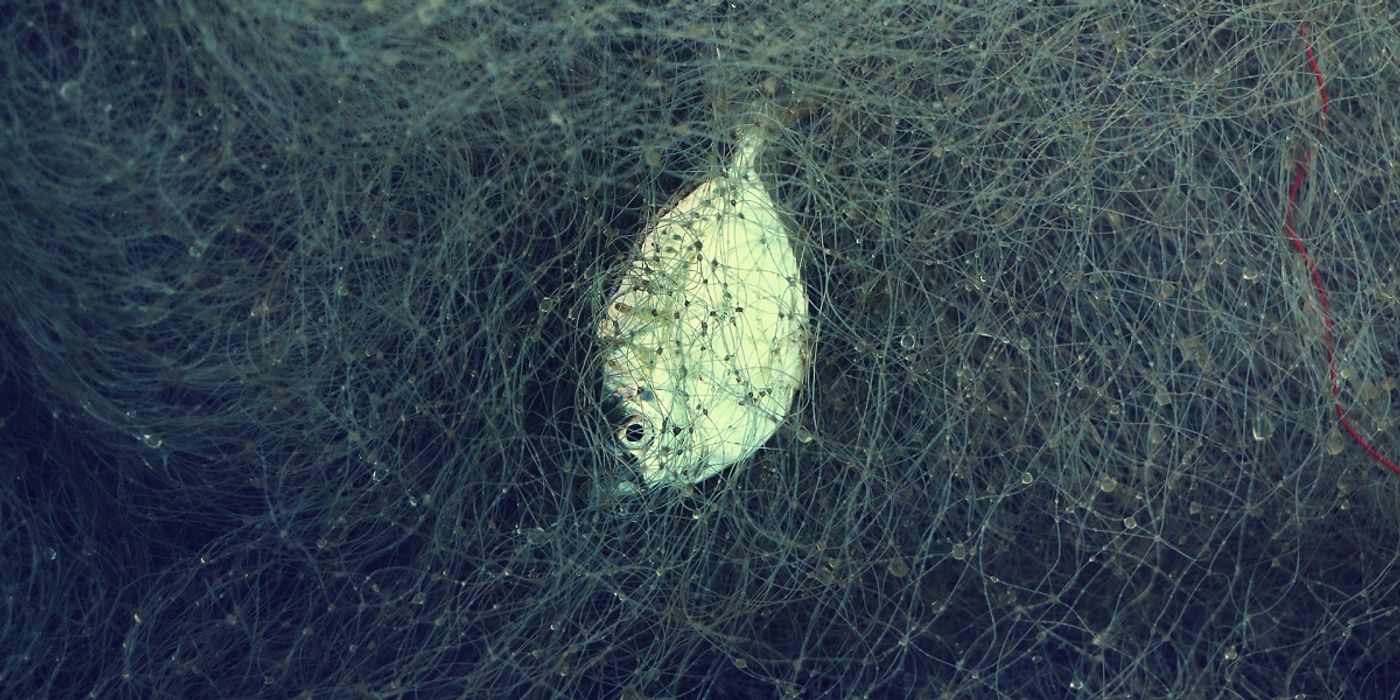Ghost Gear is Haunting Marine Life
Fishing gear is the most prevalent pollution in the oceans. It makes up nearly 50% of the floating garbage in the Great Pacific Garbage Patch, and 10% of all marine litter. Most of the ghost gear is discarded fishing lines and fishing nets, but it also includes lost traps, lead weights, and floating buoys.
This discarded and lost fishing gear left behind by fishermen is called ghost gear, killing marine life long after its intended life. Most fishermen don’t discard their gear into the ocean willingly, much of it is lost in storms, or thrown off of ships, or broken during attempting retrieval. Occasionally gear is discarded deliberately to avoid having to retain it until it can be properly disposed of on land, and illegal fishing contributes to ghost gear through the dumping of nets from enforcement pressure.
Much of the gear that’s out there is still capturing and killing wildlife and commercially valuable species. Because so many of the fishing gear is targeted for commercial species, some studies estimate that over 90% of what is caught in ghost gear is commercially valuable. Some estimates put the economic value of lost commercial species in the millions each year. Removing discarded blue crab traps alone over a six-year period is estimated to have contributed to a 21 million dollar increase in harvests. At least 243 species have been documented as being impacted by ghost gear, including many species of seals, sharks, dolphins, and turtles. Some of these species are endangered.
But it’s not the only fishing gear that’s killing our wildlife. Tires have been found to be death traps for hermit crabs, who cannot climb out of them once trapped inside. They wander around inside in circles, unable to find food, and end up cannibalizing each other. Each year around 29 million metric tons of old tires are thrown away, many dumped into the ocean where they can cause problems like this.
Many governments and non-profits have supported the retrieval and recovery of ghost gear among all kinds of plastic debris. But despite their efforts that go into retrieving ghost gear from the oceans, the amount of fishing gear left in the oceans is still increasing rather than decreasing. We must find better ways to prevent the addition of more ghost gear to our oceans. Some ideas include the use of biodegradable gear, joining the global ghost gear initiative, reporting and retrieving lost fishing gear, and engaging with government representatives and gear industries to demand better fishing practices.
Sources: World Wildlife Fund, Royal Society Publishing, Fisheries, and Oceans Canada, Marine Pollution Bulletin, The Asahi Shimbun, Global Ghost Gear Initiative









